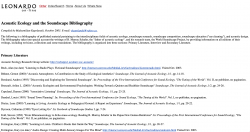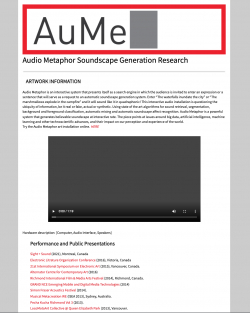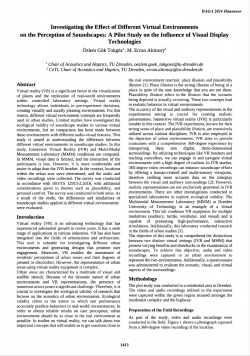Examining the ecological validity of VR experiments in soundscape and landscape research

Type
Journal
Authors
Category
Article
[ Browse Items ]
Publication Year
2024
Publisher
URL
[ private ]
Pages
108462
Abstract
With the widespread adoption of Virtual Reality (VR) technology, researchers increasingly employ VR-based laboratory experiments to recreate intricate audio-visual environments and gather subjective data on environmental perceptions. However, critics often question the generalizability of findings from such experiments to real-world settings. To address this concern, this study investigated the ecological validity—i.e., the extent to which laboratory data reflects real-world perception—of VR experiments in soundscape and landscape research. This present study employed a three-step experimental method, including a series of comparison experiments, to investigate the influence of auralization, visualization, and human-computer interaction (HCI) on ecological validity. Regarding auralization method, results indicated that an adjustment of -8 dB would optimize the ecological validity. Besides, ambisonics and synthesis had significantly higher ecological validity than monoaural, while ambisonics and synthesis have their own merits. For visualization factors, 3D video showed a higher level of verisimilitude, but modelling also showed the potential, especially paired with ambisonics audio. Additionally, virtual walking significantly enhanced ecological validity as an HCI factor. Lastly, descriptors were proposed to measure the ecological validity using verisimilitude and veridicality approaches.
Description
https://www.sciencedirect.com/science/article/pii/S0747563224003303
Number of Copies
1
| Library | Accession No | Call No | Copy No | Edition | Location | Availability |
|---|---|---|---|---|---|---|
| Main | 758 | 1 | Yes |



